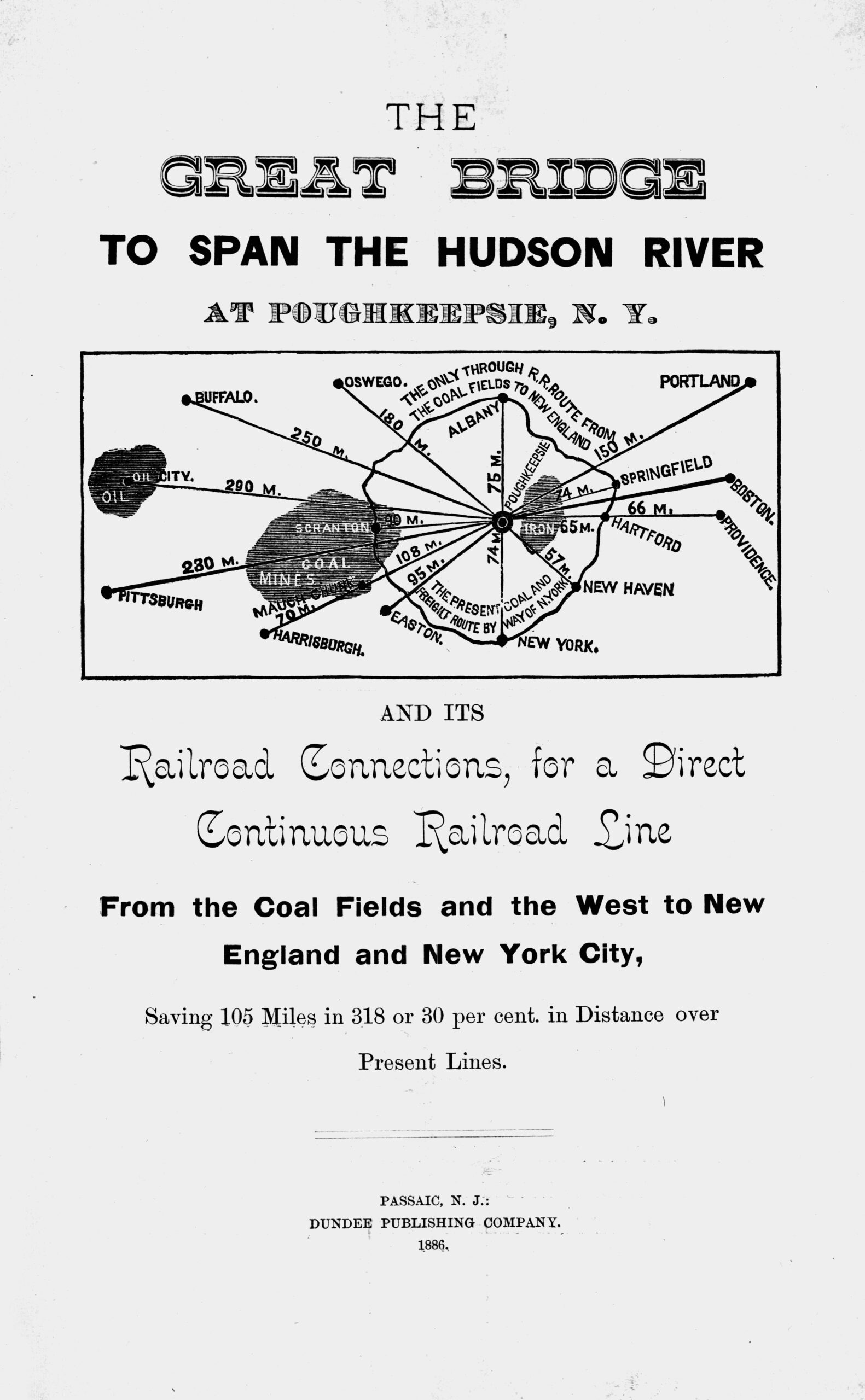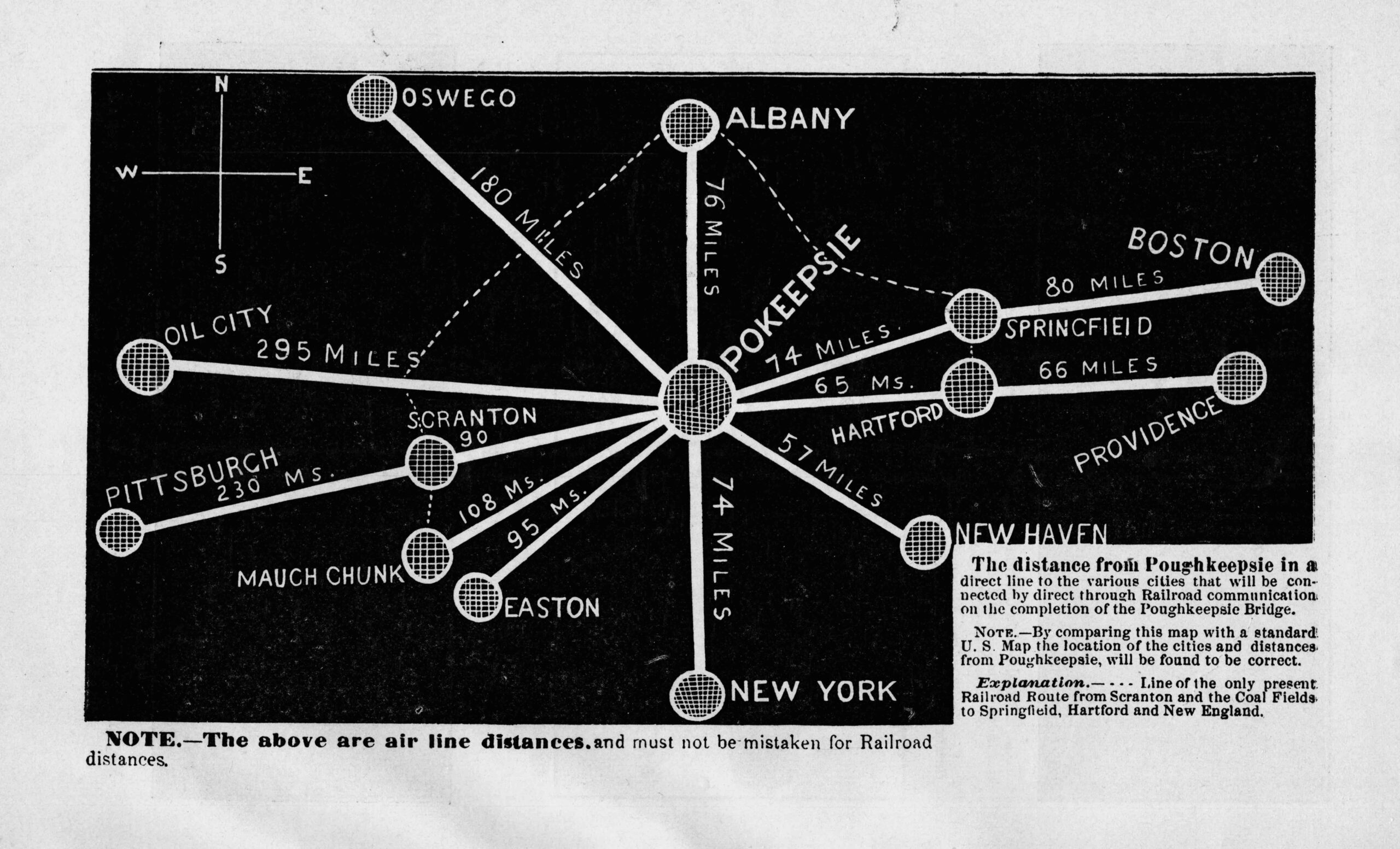The Construction of a Great Bridge Was a Hallmark of The Gilded Age
By Bill Jeffway
The Gilded Age just finished its second season on HBO and is the inspiration for a series of occasional articles in the coming months. If you have not seen The Gilded Age, but intend to, there will be no spoilers, just general references showing parallels with local people activities at the time.
In the portrayal of the wealthy New York City aristocracy of the 1880s, the Astor family represents the old established wealth, and the Russell family, based on the Vanderbilt family, represents new wealth. It was a time when powerful men, and women, made a personal mark through the financing and construction of large, iconic infrastructure like railroads and bridges. The opening of the Brooklyn Bridge in 1883 was featured as an important national event in the series. This article examines a parallel project locally: the opening of the Poughkeepsie Bridge, known today as the Walkway Over the Hudson, which opened in 1889.
At the time, such bridges were called “great bridges” and were seen as wonders of the world on the scale of the Egyptian pyramids. The Brooklyn Bridge was designed to serve horse and carriages and foot traffic, and the Poughkeepsie Bridge was designed to handle railroads.
The industrialist leading the charge for the Poughkeepsie Bridge in its earliest days was the businessman, and owner/operator of Eastman Business College – Harvey Eastman. He can be seen in an accompanying cartoon from DCHS Collections, where he dressed in the iconic top hat worn by the industrialists of The Gilded Age (and the banker in the Monopoly board game) as he lays out the list of massive economic benefits on the side of a pier to the bridge. On the other pier is the name of Andrew Carnegie, one of the better known names who was supporting the project.
Eastman had built a highly successful business college that attracted students from around the world. He was at one time seen as the invincible business champion of Poughkeepsie, especially after the death of Matthew Vassar in 1868. His school had its own bank and issued its own currency. The Eastman Band was performing at every turn. His elaborate home and grounds (what is today Eastman Park) were the site of public gatherings. During the ambitious bridge period he became mayor and then New York State Assemblyman, all to advance the cause of Poughkeepsie’s “great bridge.”
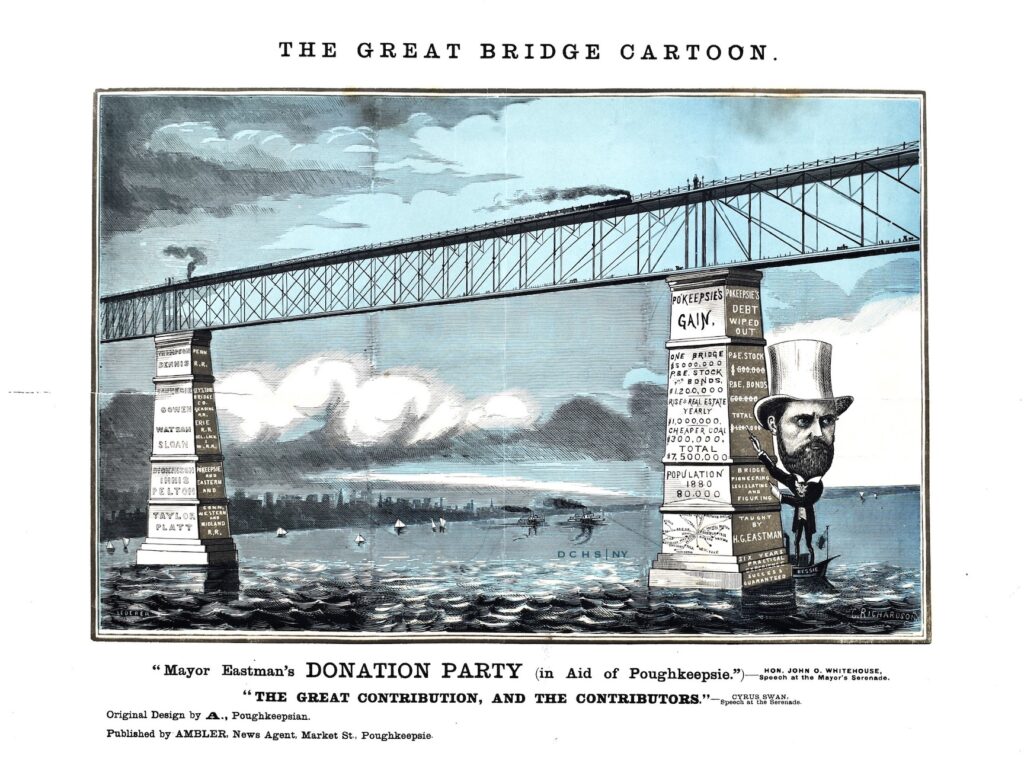

Above: A cartoon showing the early leader of the movement to build the Poughkeepsie Bridge, Harvey Eastman, who became Poughkeepsie Mayor and NYS Assemblyman as part of his effort to advance the cause. He is shown outlining the economic benefits of the bridge. DCHS Collections.
The evolution of the Brooklyn and Poughkeepsie bridges was happening at the same time. Brooklyn was the third largest city in the U.S. after New York City (then consisting only of Manhattan and western Bronx) and Philadelphia. So, a horse and carriage and footpath bridge had a sizable waiting population. Brooklyn became part of New York City in 1898.
The transcontinental railroad made its historic connection in 1869. But, as seen in The Gilded Age, the competition for railroad routes was ruthless.
Although it met with accidents and difficulties, the evolution of the Brooklyn Bridge was a smoother process. A state charter for a suspension bridge connecting Manhattan and Brooklyn started the process in 1867. Construction began in 1870, the towers were completed by 1872, the wires started to be strung in 1877, and construction of the suspension structure started in 1879. The bridge opened in 1883.
By contrast, Eastman’s effort to get a state charter was achieved in 1871, but the economic panic of 1873 created a failure in the company. By 1875, Eastman had successfully invited New England businessmen to participate and in November 1876 construction began again. Both bridges suffered significant accidents when first trying to sink what would become an underwater base pier. While the Brooklyn Bridge was able to carry on, a pier built just visible above water in 1877 in Poughkeepsie ended up languishing for a decade and became known as “the monument” to Harvey Eastman as he died in 1878. In October of 1886 work was begun for a third time and this time brought an opening of the bridge in January of 1889.
Original plans called for the creation of a suspension bridge in Poughkeepsie, the style of the Brooklyn Bridge, a depiction of which can be found accompanying this article from DCHS Collections. But those plans changed to a cantilever, deck, and truss bridge which involved more piers in the river.
Although the “great bridge” served its extraordinary purpose of connecting New England and Pennsylvania coal mines, and beyond, the evolution of the automobile in the 20th century reduced its role below anticipated expectations.
Both the Brooklyn and Poughkeepsie Bridges are now surrounded by all sorts of new and extraordinary technology. Although both continue to impress us even today, in their day they were even more exceptional as icons of personal and national power and wealth.
Brooklyn Bridge: Total length: 6,016 feet. Span: Total longest span,1,600 feet. 127 feet above the water.
Poughkeepsie Bridge: Total length: 6,768 feet. Span: 7 spans, ranging from 201 to 548 feet. 212 feet above the water.
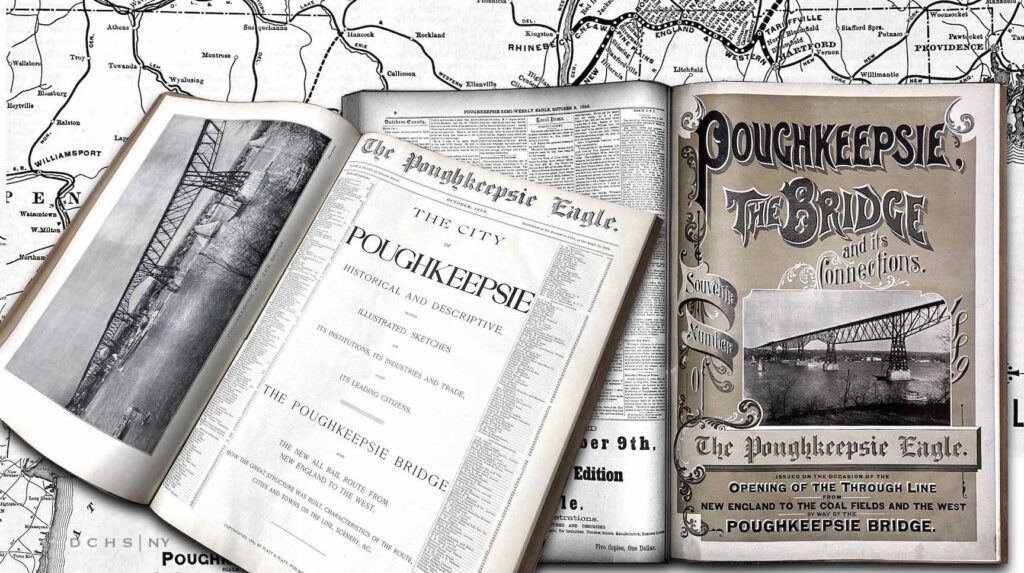

Above: Poughkeepsie Eagle News special supplement for the bridge opening. DCHS Collections.
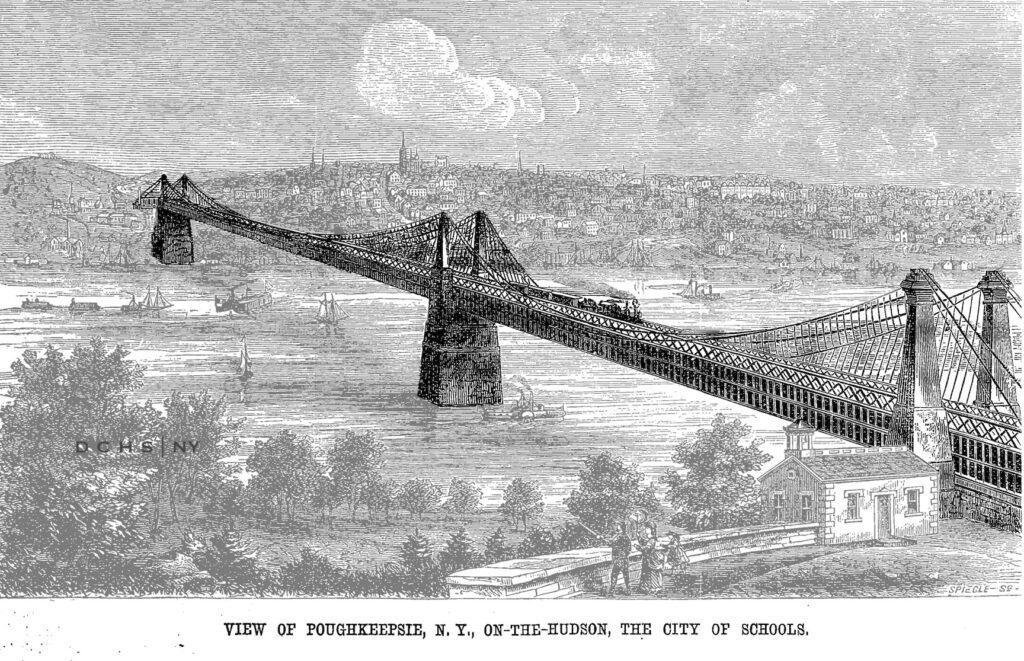

Above: The original design of the Poughkeepsie Railroad Bridge in the 1870s was a suspension style construction similar to the Brooklyn Bridge that was never realized. Looking from the west bank of the Hudson toward Poughkeepsie. DCHS Collections.
Below: Promotional booklet putting Poughkeepsie at the center of a vast, but much more efficient and timely network.





